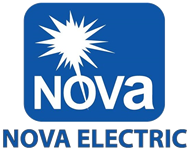SELECTING THE PROPER INVERTER / FREQUENCY CONVERTER FOR YOUR APPLICATION
What size inverter do I need? (Starting Load and Continuous Load)
The power output rating of the inverter you choose (in VA or in watts) is directly dependant on the load you will be powering. It is absolutely critical that you select an inverter which is powerful enough to operate your specific loads.
Step 1: The first step in your inverter selection is to calculate the total (Watts or Amps) of all appliances you plan to power. Virtually all AC powered equipment will bear a label (usually placed near where the power wire enters the unit), indicating how many Amps or Watts of electricity the equipment uses.
Step 2: The second step is to determine the characteristics of your load. AC loads generally fall into two categories: Electronic loads, such as switching power supplies (or SMPS, as found in computers), and motors, such as the compressor in a refrigerator. Both of these types of loads require different levels of the initial surge of power required to start up, often called a Peak Surge for electronic loads, or Locked Rotor Current for motor loads. The Peak Surge or Locked Rotor Current is almost always considerably higher than the Continuous Load (which is the power needed to run the load after initial start up) and must be considered when sizing the inverter, the battery, and the cables that connect the two. The following formulas should therefore be strictly observed:
Electronic Load / Switching Power Supply: Some SMPS type load are extremely reactive, with a poor power factor at the input, due to very high peak current and high harmonics content at the input. Consequently, selecting a high-frequency topology inverter with a power output rating equal to or only slightly greater than the power rating of the load will result in an overloaded inverter, with a distorted wave shape at the output. Therefore, for high-frequency topology inverters (GL and CGL Series), Nova Electric suggests maintaining a ratio of 3:1 between the power output rating of the inverter in VA, and the rating of the load in watts. For example, if a GL or CGL Series Inverter is to be used, we would recommend powering a 300 watt telecom gear load with an inverter which has a minimum power output rating of 900 VA. For units which have a transformer isolated topology (such as our GS or Classic Series), this ratio can be reduced to 2:1 (e.g., a 1,000W SMPS load can be powered by a 2 KVA inverter). In effect, the tradeoff for utilizing a lightweight, compact high frequency topology inverter is the requisite higher ratio between the power rating of the inverter and the power rating of the load.
Motor / Compressor Load: Nova Electric does not recommend the use of high frequency inverters (GL or CGL) for motor or compressor loads in general, though they can be modified for such use in certain applications where weight savings are critical (consult factory for details). Whenever possible, we recommend using the low-frequency transformer isolated GS or Classic Series models for motor loads. The formula to use for all inverters which are to power motor loads is: Inverter’s output AC voltage multiplied by Locked Rotor Current of motor load equals minimum rating of inverter in VA. For example, if you have a pump which runs off of 120 VAC and has a Locked Rotor Current of 10 Amps, you would need an inverter of at least 1200 VA to run the pump (120 VAC x 10A = 1200 VA). It is not recommended to start two motor loads simultaneously unless a very large capacity inverter is being used.
